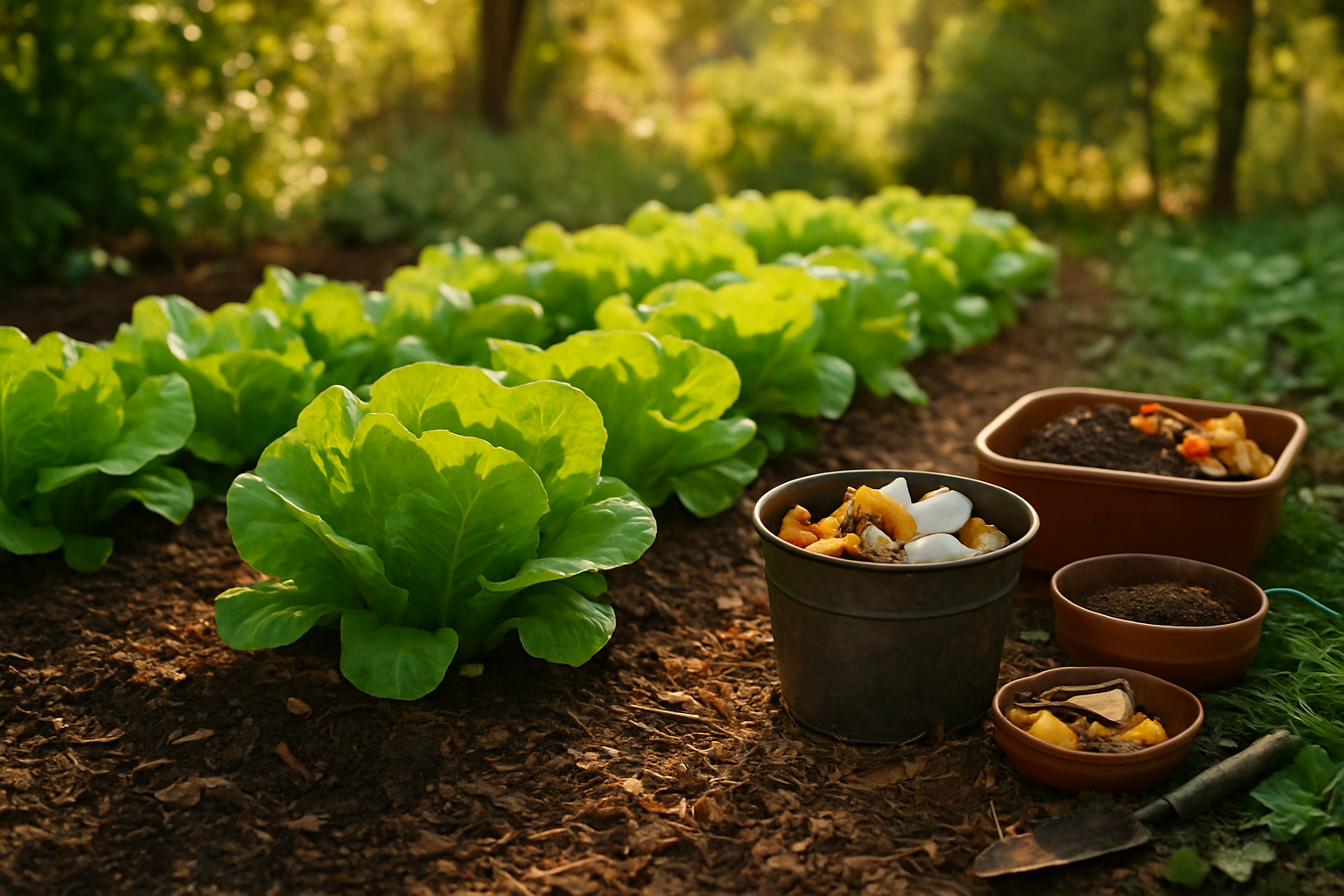Why Organic Fertilizers Are Great for Lettuce
Lettuce is one of the quickest vegetables to grow in your garden, often ready to harvest in just a few weeks. Because it grows so fast, lettuce needs a steady and gentle supply of nutrients to produce crisp, flavorful leaves. Organic fertilizers are an excellent choice for this because they release nutrients slowly and consistently, matching the lettuce’s rapid growth cycle without overwhelming the delicate roots.
Unlike synthetic fertilizers, which may provide a sudden burst of chemicals, organic options like compost, worm castings, or aged manure feed your greens with natural elements. This is especially important since you eat lettuce fresh and raw, reducing the risk of chemical residues ending up on your plate. Growers have also found that organically fed lettuce tastes better—richer and more nuanced—because the soil’s microbial life is healthier, enhancing nutrient uptake.
Beyond your garden, organic fertilizers are much better for the environment. They improve soil structure, encourage beneficial organisms, and lower the risk of water pollution since nutrients aren’t as prone to runoff. Over time, using organic fertilizers ensures your soil gets healthier each season, making every batch of lettuce tastier and more resilient.
If you want cleaner, fresher greens and a more sustainable garden, switching to organic fertilizer is a simple step with big benefits you’ll notice both at the dinner table and in the garden itself.
Amending Soil Before Planting
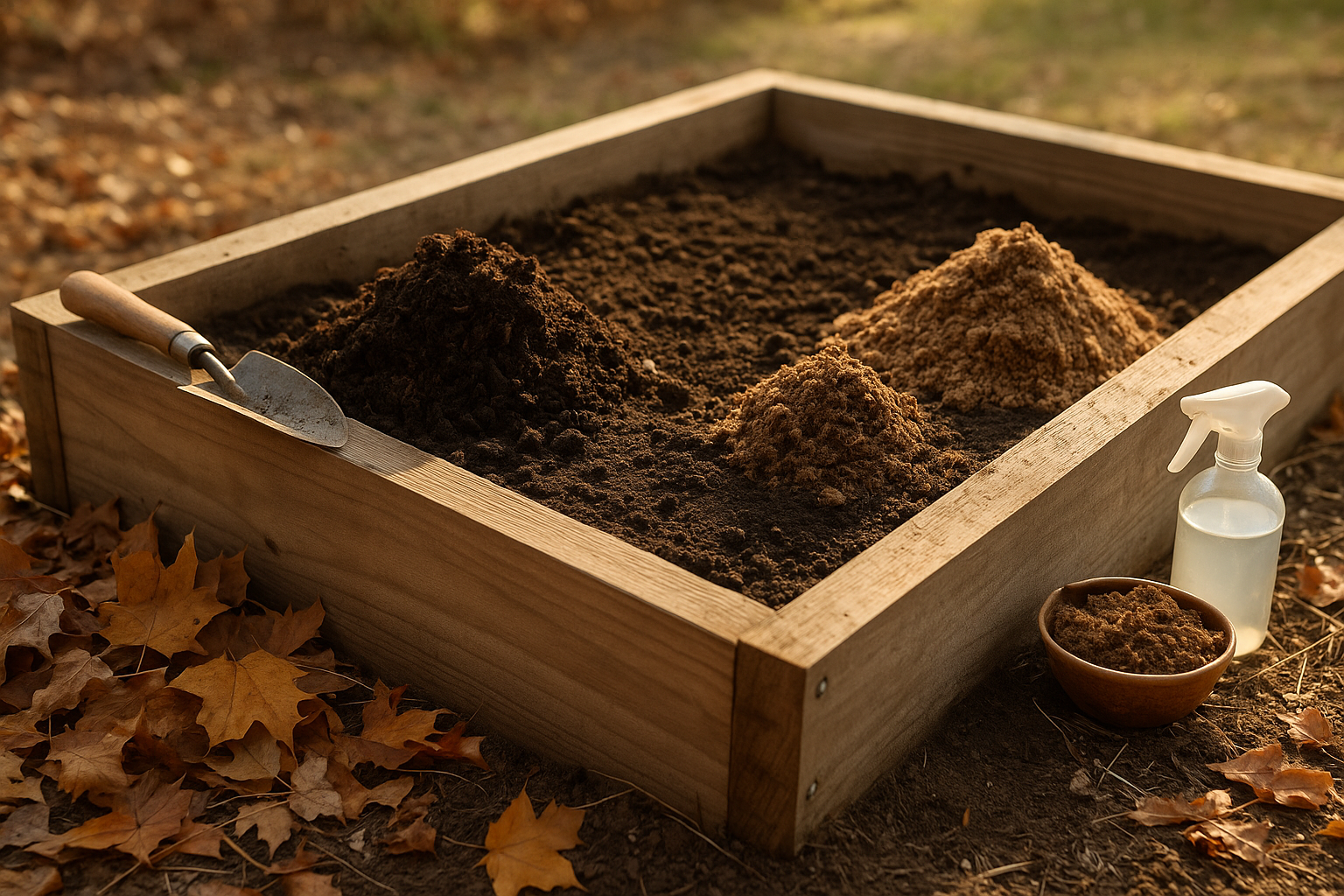
Before planting lettuce, taking the time to amend your soil can make a big difference in your harvest. Start by loosening the top 6-8 inches of soil to break up clumps and remove rocks or old roots.
One of the best and easiest amendments is homemade compost—full of nutrients and beneficial microbes that help young lettuce thrive. Simply spread a 1-2 inch layer over your garden bed and mix it in thoroughly. If you have aged manure—that is, manure left to decompose for at least six months—it’s another powerhouse amendment, providing a gentle, steady release of nitrogen essential for leafy greens like lettuce. Leaf mold, made from decomposed autumn leaves, also boosts moisture retention and encourages a rich, crumbly soil structure.
You don’t need all three at once: even just one option improves fertility and texture. Amending soil this way creates a living, nutrient-rich foundation that supports healthy root systems and promotes steady, even growth throughout the lettuce’s season.
The beauty of building up soil with organic matter is that it naturally reduces the need for synthetic fertilizers, making your garden eco-friendly and your crops healthier. So, spend a little extra time on preparation to foster productive, low-maintenance lettuce beds all season long.
Best Homemade Organic Fertilizer Ingredients
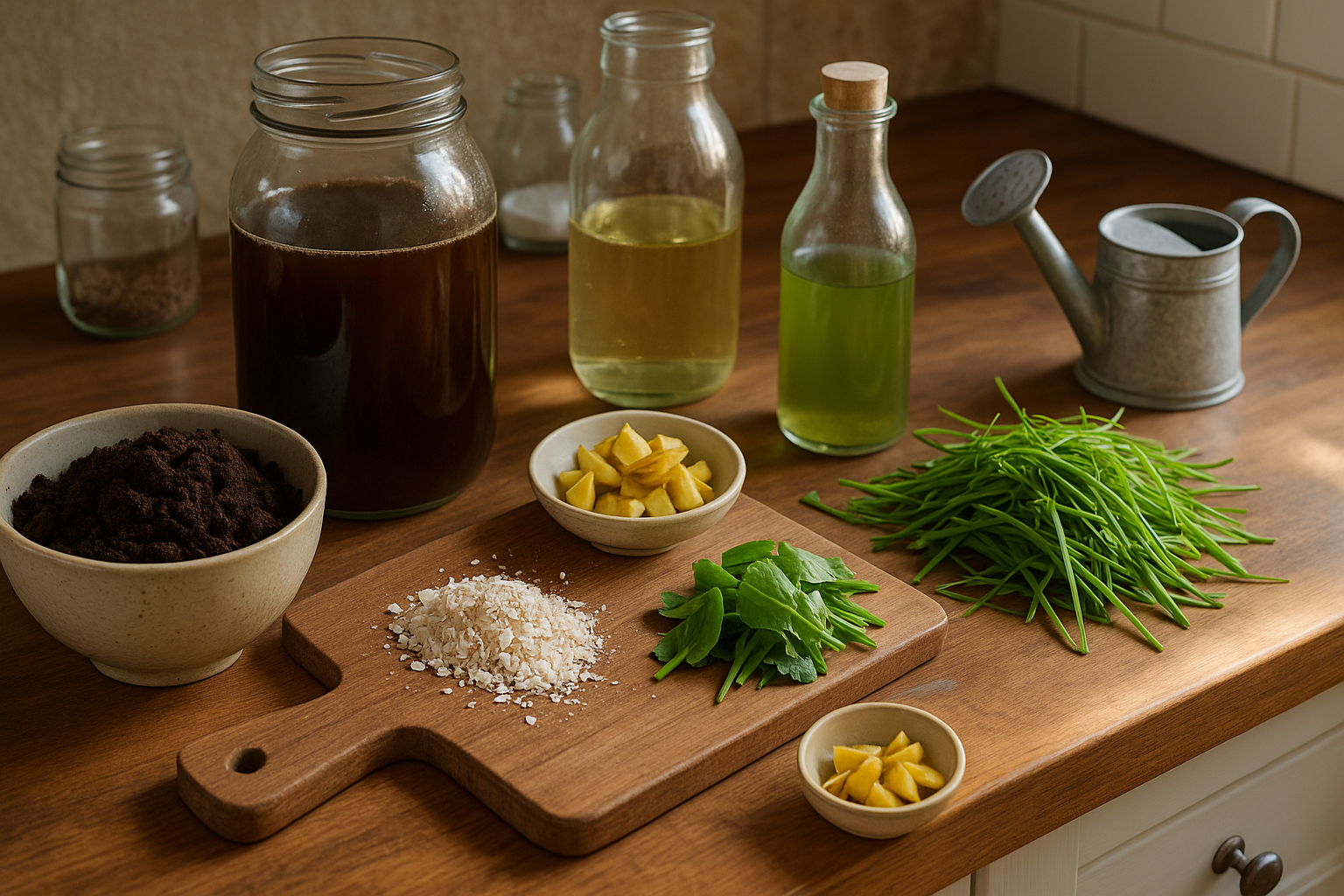
Turning everyday kitchen scraps and garden leftovers into organic fertilizer is an easy, affordable way to boost your garden’s health while reducing waste. Some of the best sources start right in your own home.
High-nitrogen items such as used coffee grounds and fresh grass clippings can turbocharge plant growth, especially for leafy greens and vegetables. Simply sprinkle spent coffee grounds around acid-loving plants like tomatoes and blueberries, or add grass clippings to your compost pile for a nutrient-rich blend.
For an extra nutritional punch, save your eggshells; crush them and mix them into the soil to provide calcium, which strengthens cell walls and helps prevent blossom end rot in tomatoes and peppers. Banana peels are another kitchen gem—chop them up and bury them near plant roots to deliver potassium, which supports blooms and fruit development.
For a liquid booster, try making compost tea by steeping some finished compost in water for a few days. Use this mild “brew” to gently feed seedlings without burning delicate roots.
If you live near the coast or have access to fish markets, diluted fish or seaweed solutions can provide important trace minerals and micronutrients that many store-bought fertilizers miss.
Always remember to let scraps decompose or dilute strong solutions before applying, as fresh material can sometimes harm young plants.
By combining these common ingredients, you’ll create a balanced, nutrient-rich fertilizer that nourishes your garden naturally and sustainably, all while cutting down on household waste.
Simple DIY Lettuce Fertilizer Recipes
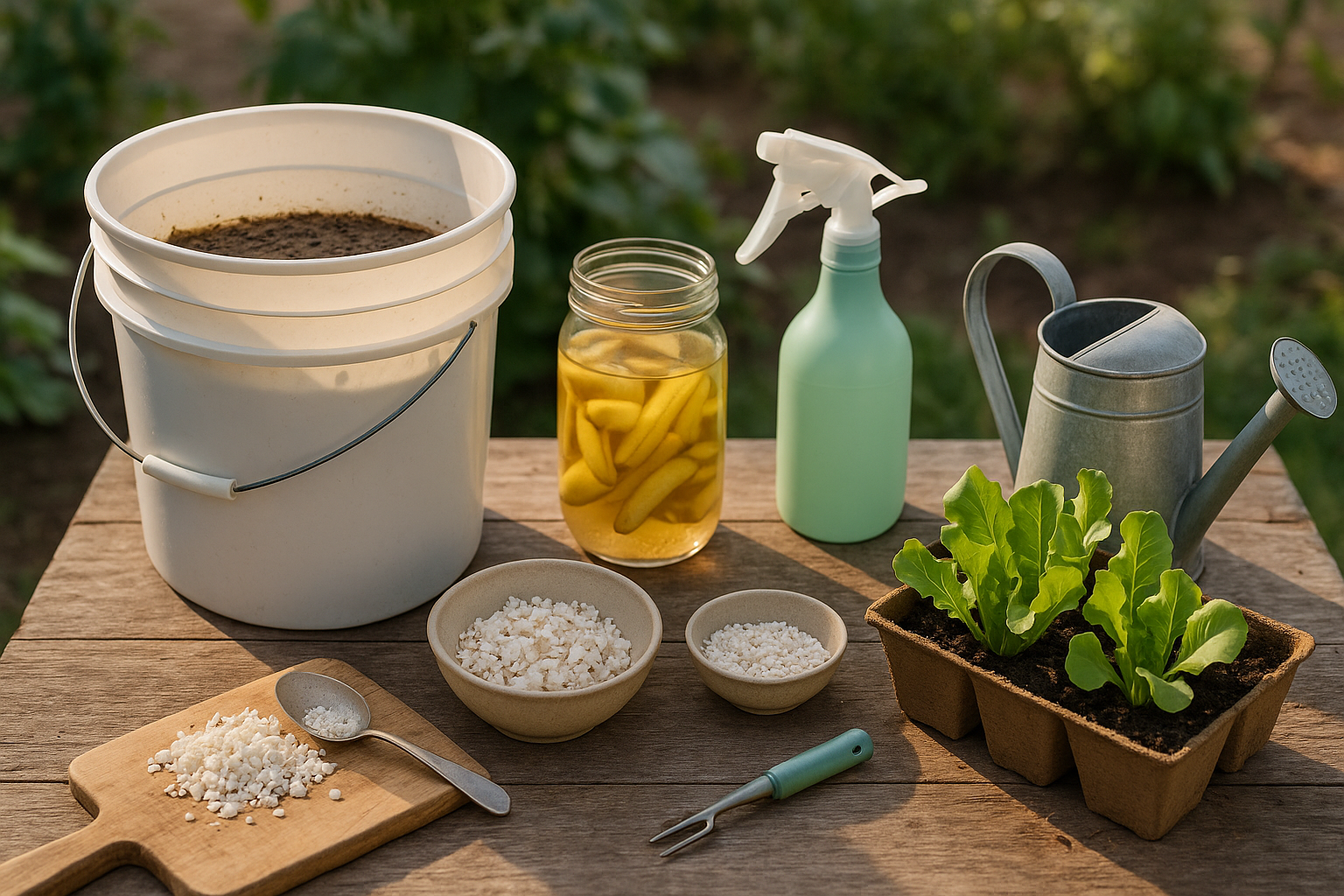
Nourishing your lettuce at home doesn’t have to be complicated or expensive—simple kitchen scraps can be turned into effective, easy DIY fertilizers.
For a classic compost tea, fill a five-gallon bucket one-third full with finished compost, top it up with water, and let it steep for 2-3 days, stirring occasionally. Strain the liquid and dilute one part tea with five parts water before gently watering your lettuce plants at the base, avoiding the leaves to prevent mold.
Banana peel water is perfect for a potassium boost. Chop up one or two peels, soak them in a jar of water for two days, then strain and dilute the liquid 1:2 (one part peel water, two parts regular water) to give your lettuce a gentle feeding every two weeks.
Eggshell powder adds calcium for strong leaves—thoroughly dry eggshells, crush them into a fine powder, and sprinkle a teaspoon directly onto the soil surface before watering.
Alternatively, coffee grounds can improve soil texture and supply nitrogen. Sprinkle used, dry grounds in a thin layer around lettuce, but no more than once a month to avoid acid build-up.
Always remember, less is more: over-fertilized lettuce shows yellowing tips or stunted growth, while healthy lettuce boasts bright, upright leaves and steady new growth. Watch for these signs and tailor your feedings. If in doubt, wait a week or two before fertilizing again to ensure your greens thrive without the risk of overload.
When and How to Apply Homemade Fertilizer
For the healthiest lettuce, timing your homemade fertilizer applications is key. Start by enriching the soil during planting, mixing your chosen fertilizer—like compost tea or diluted kitchen scraps—into the top few inches for a nutrient-rich foundation.
As your lettuce grows, a mid-growth boost about 3-4 weeks after planting ensures continued leaf development. For this stage, foliar feeding works wonders: simply strain your liquid fertilizer and spray it directly onto the leaves early in the morning or late in the afternoon to avoid sun scorch. Foliar feeding delivers nutrients straight to the plant, giving a quick vitality kick, especially in cooler spring weather.
Once you harvest your lettuce, lightly scratch in more organic matter to refresh the soil for the next crop cycle.
Fertilizing Schedule for Small Gardens or Containers
- Light soil amendment at planting
- Foliar spray every 10-14 days during active growth
- Top-off of compost or diluted fertilizer after harvesting
Always water before applying fertilizer to prevent burning the roots or leaves. For best results, rotate between liquid fertilizers for foliar sprays and slow-release amendments like worm castings for soil health.
With this routine, even beginners can keep their lettuce lush, green, and productive all season long.
Organic Fertilizer Tips for Healthier Lettuce
To grow healthy, vibrant lettuce with organic fertilizer, start by using only what your soil and plants need. Overfeeding, even with natural products, can cause more harm than good, leading to overly lush leaves that are prone to pests or burned roots. Always follow the recommended rates and test your soil first, adjusting fertilizer application as your lettuce grows.
Ensure your planting bed has excellent drainage, since soggy roots can quickly lead to disease or stunted growth. Raised beds or mixing in organic matter like compost can help improve drainage.
Store your organic fertilizer in a dry, cool place and keep it tightly sealed to prevent clumping, contamination, or nutrient loss.
If you notice yellowing leaves, check first for waterlogged roots or excess nutrients, and ease off fertilizer until your plants recover. For stunted growth, inspect for compacted soil or insufficient nutrients — loosen the soil and try a half-strength liquid feed to gently boost growth.
Always wash lettuce thoroughly before eating, and use clean hands or tools when harvesting to avoid introducing bacteria or contaminants.
By following these simple tips, you’ll enjoy delicious, safe, and healthy homegrown lettuce all season long.
Sustainable Habits for Ongoing Success
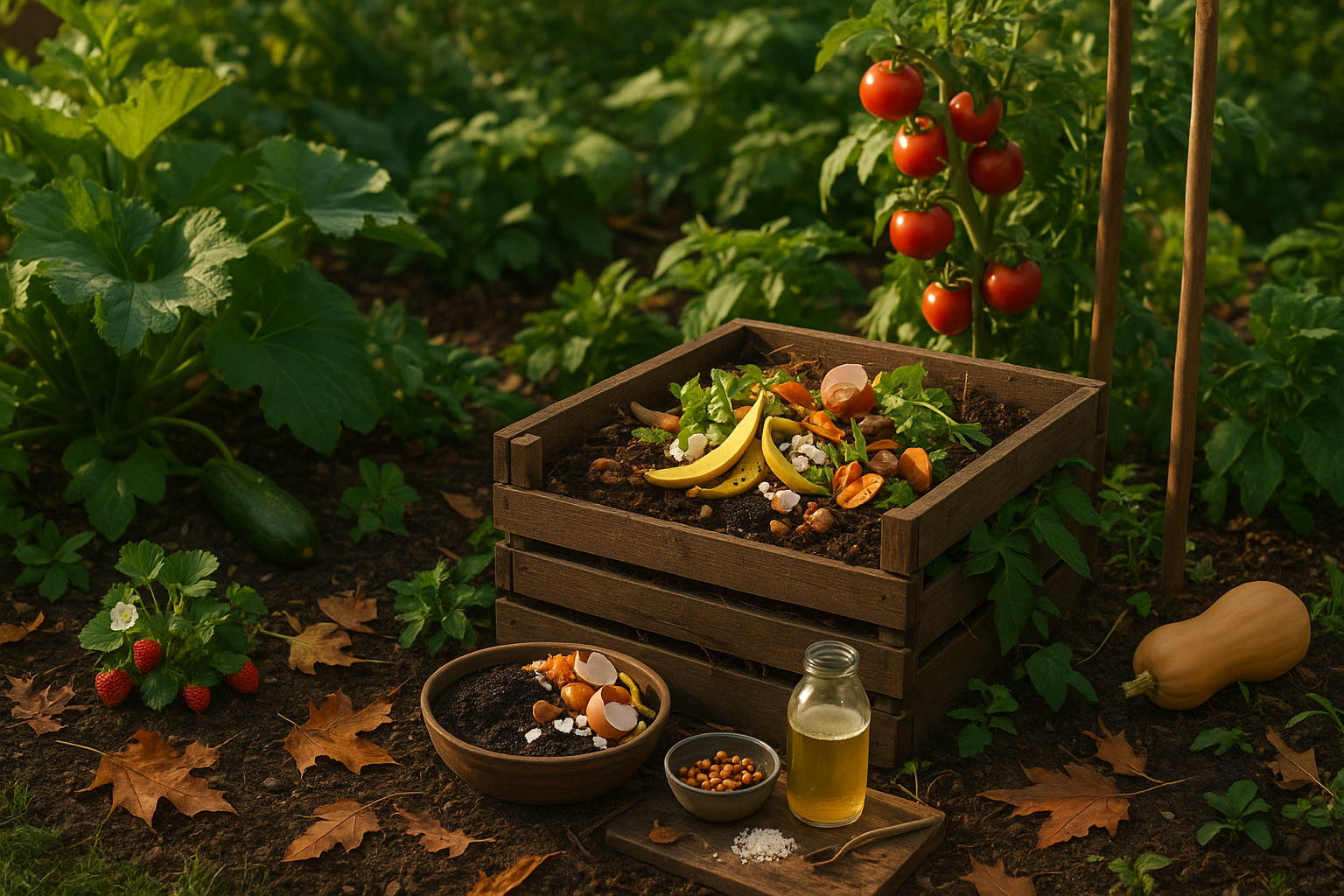
Committing to sustainable gardening habits benefits both your garden and the planet—and it’s easier than you might think. Start by regularly composting kitchen scraps, coffee grounds, eggshells, and garden trimmings. These materials break down into nutrient-rich compost that fuels future crops with zero waste.
Set up a small compost bin or pile in a shaded garden corner, and turn it every couple of weeks to speed up the process. To further minimize waste, look for opportunities to:
- Reuse pruned branches as stakes
- Mulch lawn clippings around plants
- Dry leaves for natural mulch
These simple practices close the nutrient loop in your garden, meaning less waste goes to the landfill and more nourishment returns to your soil. Over time, these organic care habits improve both the flavor and yield of your harvests—for example, homegrown tomatoes taste richer when grown in nutrient-dense, chemical-free soil.
Plus, by avoiding synthetic fertilizers and pesticides, you protect nearby pollinators, conserve water, and leave a healthier environment for future gardeners. Every small, consistent action contributes to a more sustainable and productive garden year after year.
